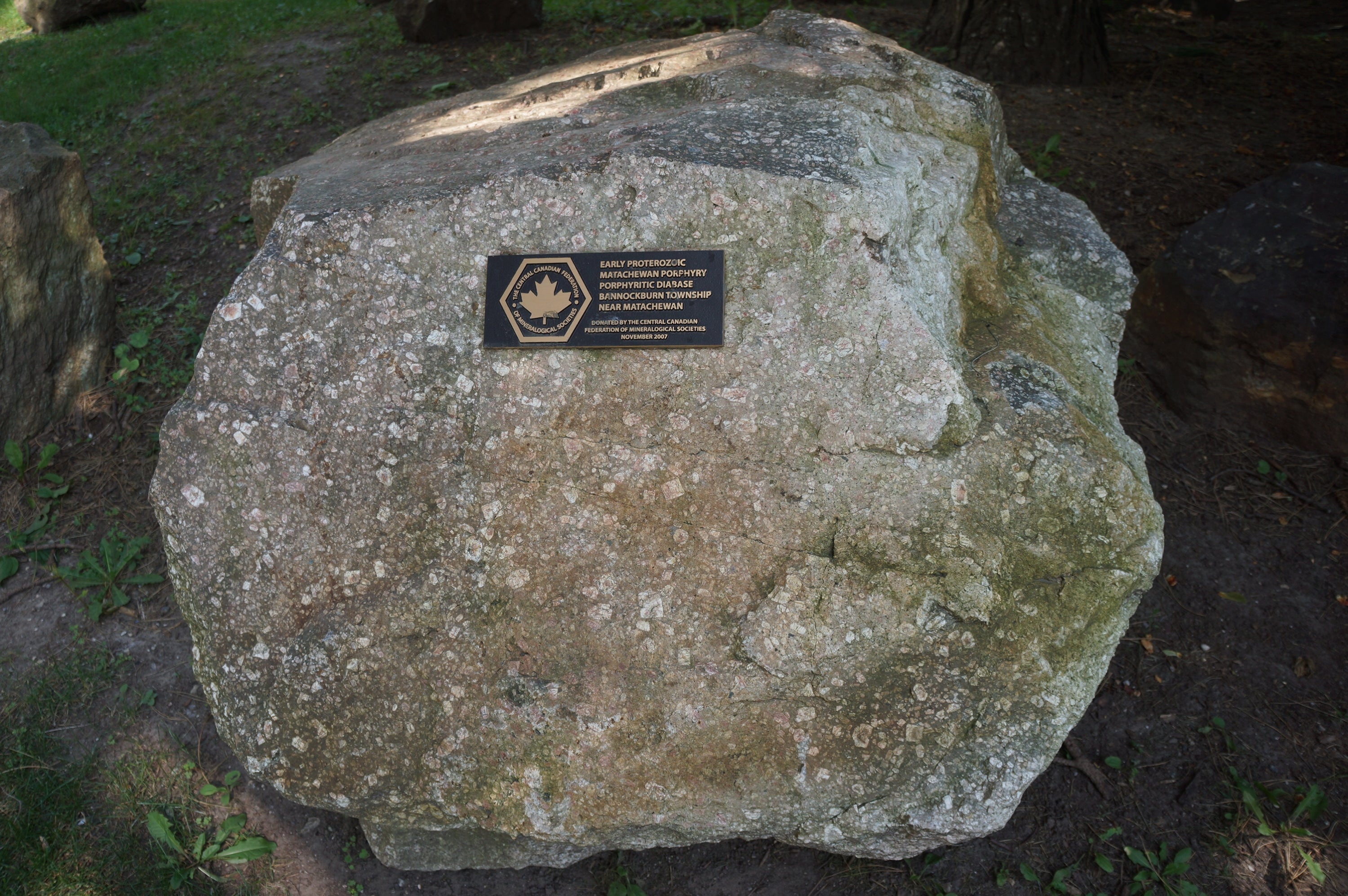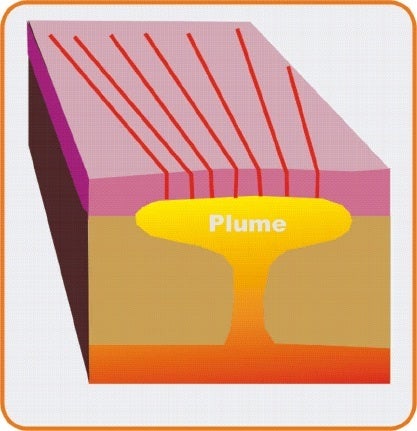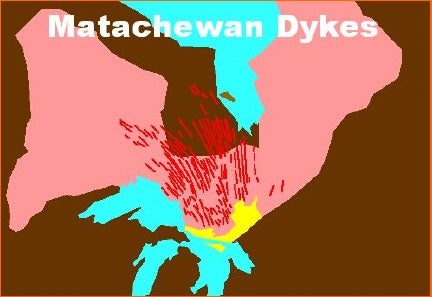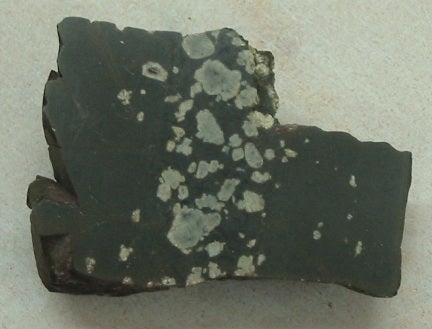
This rock was donated to the Peter Russell Rock Garden by the Central Canadian Federation of Mineralogical Societies (CCFMS).
Extraction and delivery of Matachewan porphyry to University of Waterloo by the CCFMS project team
On November 2, 2007, four members of the CCFMS and two local Matachewan contractors set out to extract several large boulders of Matachewan porphyry from a site in the Bannockburn Township near Matachewan in the Kirkland Lake area of Ontario.
The Matachewan Porphyry is made of pink to cream rectangular feldspar phenocrysts from 0.6 cm across to 2.5 cm (0.25 to 1 inch) floating in a dark grey to black country rock.
The team arrived with backhoe, float, blasting equipment, diamond saw, Pionjar drill and small tools ready for any issue that might make extraction difficult. The backhoe operator quickly went to work and removed trees and rocks that were in the way of successful extraction of the specimens.
After several hours of work to clear a way for removal of the specimens, the first large piece was successfully removed from the outcrop. The 1.2 m by 1.2 m by 0.9 m (4 ft by 4 ft by 3 ft) piece weighing several tonnes was destined for the University of Waterloo. Several hours later four more large pieces of Matachewan porphyry were successfully removed from the outcrop and loaded onto a flatbed truck with the backhoe. They were transported to the town of Matachewan ready for loading on November 5, 2007 on a transport truck headed for Waterloo and Peterborough.
On November 9, 2007, the University of Waterloo specimen was unloaded and planted in the university’s rock garden.
Members of the team were:
- CCFMS: Bill Plavac, Doug Dingeldein, Bob Beckett, and John Calder
- On-site: JP Boucher and Gerard Bernatchez
Visit the CCFMS website to learn more.
Matachewan porphyritic diabase

To begin the process of dyke formation, the Canadian Shield was subjected to stresses as a mantle plume of molten magma 1,000 km in diameter pushed up against the brittle crust causing radiating cracks to appear. Mantle plumes are formed as hot rock from the mantle moved upwards, partly melting when they reach shallow depths in the earth's crust. The plume pushed up against the crust centered north of Barrie, Ontario, forming cracks trending northwest. These radiating cracks filled with diabase and other volcanic rocks from the reservoirs below.

Fractional crystallization
The magma in the reservoirs interacted with rocks forming the magma chamber to produce rocks of different chemistry. As the magma cooled some minerals started to crystallize. In this rock large feldspars grew. This magma then erupted and formed the porphyritic rocks such as our diabase. As the crystals formed and were removed from the magma, the chemistry of the liquid changed and smaller crystals grew. This process is called fractional crystallization.
The dykes on the Matachewan area are approximately 20m wide and are about 700 to 800 kilometres long. Dykes forming today on Iceland with a width of one metre move along the fracture at about one kilometre and hour. The Matachewan dykes may have taken a month to flow along the entire length of the swarm.
References

As the lava flows into the fractures forming the dykes the lava cools against the surrounding rocks forming chilled margins. This example is from the Isle of Skye, Scotland. This example is 5 cm across, but the Matachewan dykes are approximately 200 metres across.
